Here's a quick closure table example for SQLite. I've not included the statements for inserting items into an existing tree. Instead, I've just created the statements manually. You can find the insert and delete statements in the Models for hierarchical data slides.
For the sake of my sanity when inserting the IDs for the directories, I renamed the directories to match their IDs:
(ROOT)
/ \
Dir2 Dir3
/ \ \
Dir4 Dir5 Dir6
/
Dir7
Create tables
CREATE TABLE `filesystem` (
`id` INTEGER,
`dirname` TEXT,
PRIMARY KEY (`id`)
);
CREATE TABLE `tree_path` (
`ancestor` INTEGER,
`descendant` INTEGER,
PRIMARY KEY (`ancestor`, `descendant`)
);
Insert directories into filesystem table
INSERT INTO filesystem (id, dirname) VALUES (1, 'ROOT');
INSERT INTO filesystem (id, dirname) VALUES (2, 'Dir2');
INSERT INTO filesystem (id, dirname) VALUES (3, 'Dir3');
INSERT INTO filesystem (id, dirname) VALUES (4, 'Dir4');
INSERT INTO filesystem (id, dirname) VALUES (5, 'Dir5');
INSERT INTO filesystem (id, dirname) VALUES (6, 'Dir6');
INSERT INTO filesystem (id, dirname) VALUES (7, 'Dir7');
Create the closure table paths
INSERT INTO tree_path (ancestor, descendant) VALUES (1, 1);
INSERT INTO tree_path (ancestor, descendant) VALUES (1, 2);
INSERT INTO tree_path (ancestor, descendant) VALUES (1, 3);
INSERT INTO tree_path (ancestor, descendant) VALUES (1, 4);
INSERT INTO tree_path (ancestor, descendant) VALUES (1, 5);
INSERT INTO tree_path (ancestor, descendant) VALUES (1, 6);
INSERT INTO tree_path (ancestor, descendant) VALUES (1, 7);
INSERT INTO tree_path (ancestor, descendant) VALUES (2, 2);
INSERT INTO tree_path (ancestor, descendant) VALUES (2, 4);
INSERT INTO tree_path (ancestor, descendant) VALUES (2, 5);
INSERT INTO tree_path (ancestor, descendant) VALUES (2, 7);
INSERT INTO tree_path (ancestor, descendant) VALUES (3, 3);
INSERT INTO tree_path (ancestor, descendant) VALUES (3, 6);
INSERT INTO tree_path (ancestor, descendant) VALUES (4, 4);
INSERT INTO tree_path (ancestor, descendant) VALUES (4, 7);
INSERT INTO tree_path (ancestor, descendant) VALUES (5, 5);
INSERT INTO tree_path (ancestor, descendant) VALUES (6, 6);
INSERT INTO tree_path (ancestor, descendant) VALUES (7, 7);
Run some queries
# (ROOT) and subdirectories
SELECT f.id, f.dirname FROM filesystem f
JOIN tree_path t
ON t.descendant = f.id
WHERE t.ancestor = 1;
+----+---------+
| id | dirname |
+----+---------+
| 1 | ROOT |
| 2 | Dir2 |
| 3 | Dir3 |
| 4 | Dir4 |
| 5 | Dir5 |
| 6 | Dir6 |
| 7 | Dir7 |
+----+---------+
# Dir3 and subdirectories
SELECT f.id, f.dirname
FROM filesystem f
JOIN tree_path t
ON t.descendant = f.id
WHERE t.ancestor = 3;
+----+---------+
| id | dirname |
+----+---------+
| 3 | Dir3 |
| 6 | Dir6 |
+----+---------+
# Dir5 and parent directories
SELECT f.id, f.dirname
FROM filesystem f
JOIN tree_path t
ON t.ancestor = f.id
WHERE t.descendant = 5;
+----+---------+
| id | dirname |
+----+---------+
| 1 | ROOT |
| 2 | Dir2 |
| 5 | Dir5 |
+----+---------+
# Dir7 and parent directories
SELECT f.id, f.dirname
FROM filesystem f
JOIN tree_path t
ON t.ancestor = f.id
WHERE t.descendant = 7;
+----+---------+
| id | dirname |
+----+---------+
| 1 | ROOT |
| 2 | Dir2 |
| 4 | Dir4 |
| 7 | Dir7 |
+----+---------+
SELECT f.id, f.dirname
FROM filesystem f
JOIN tree_path t
ON t.ancestor = f.id
WHERE t.descendant = (
SELECT id
FROM filesystem
WHERE dirname LIKE '%7%'
);
+----+---------+
| id | dirname |
+----+---------+
| 1 | ROOT |
| 2 | Dir2 |
| 4 | Dir4 |
| 7 | Dir7 |
+----+---------+
